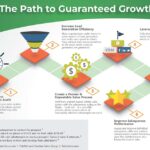Sales management needs to develop new strategies, techniques, and training to bring the organization’s sales and marketing system into the 21st century. Many firms and individuals still sell using methods from the last century. Here is a comparison of traditional selling versus 21st-century selling.
| Traditional Selling | Modern Selling |
| Typical 1960s-80s selling, and still found today. | Essential to sustain successful business today. |
| Standard product | Customized, flexible, tailored product and service |
| Sales function performed by a ‘salesperson’ | Sales function performed by a ‘strategic business manager’ |
| Seller has product knowledge | Seller has strategic knowledge of customer’s marketplace and knows all implications and opportunities resulting from product/service supply relating to customer’s market-place |
| Delivery service and supporting information and training are typically value-aspects of supply | Strategic interpretation of the customer organization’s market opportunities and Assistance with project evaluation and decision-making are added value aspects of supply |
| Value is represented and judged according to selling price | Value is assessed according to the cost to the customer, plus non-financial implications with respect to CSR (corporate social responsibility), environment, ethics, and corporate culture |
| The benefits and competitive strengths of the products or service are almost entirely tangible, and intangibles are rarely considered or emphasized | The benefits and competitive strengths of the product or service now include many significant intangibles, and the onus is on the selling organization to quantify their value |



